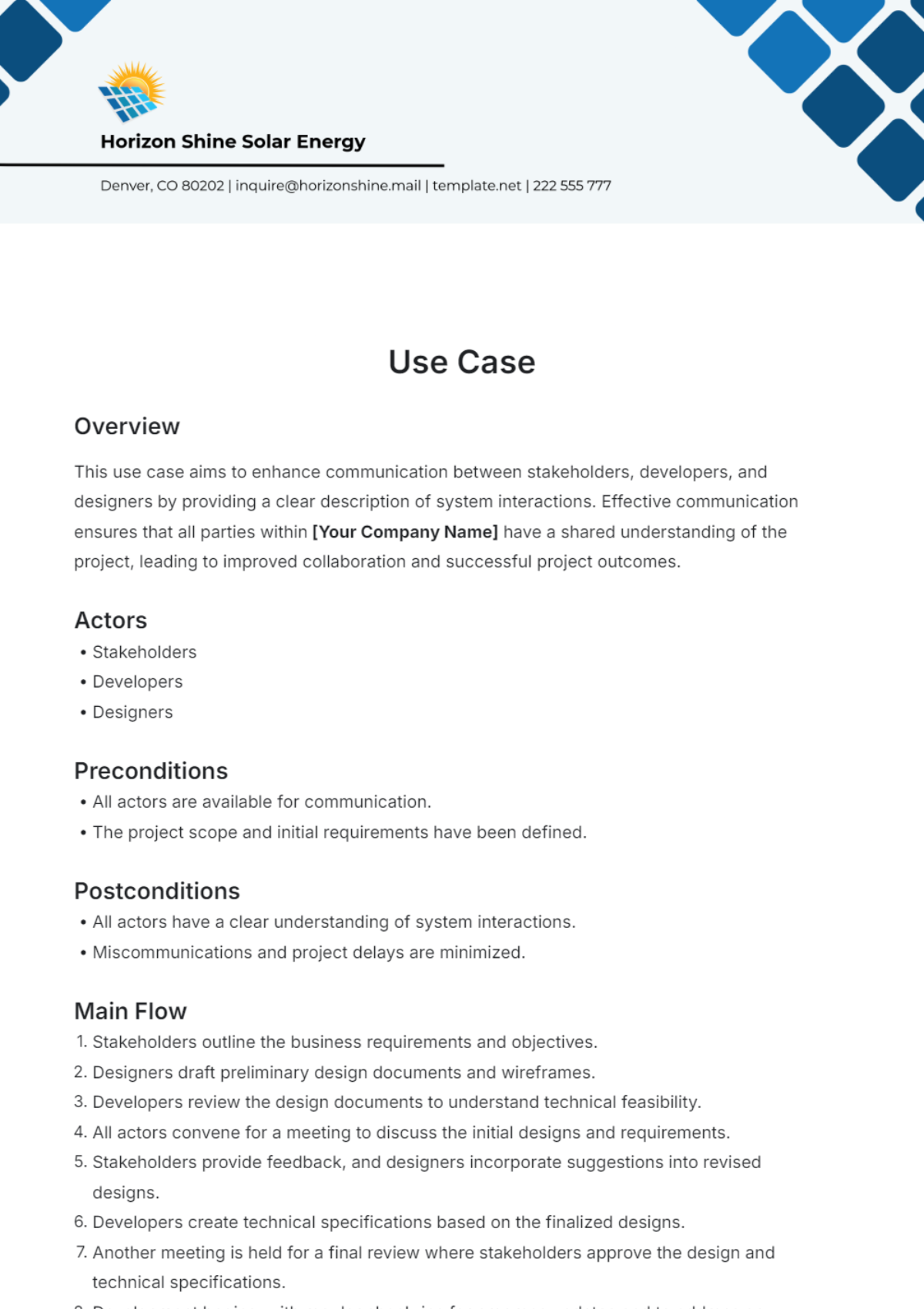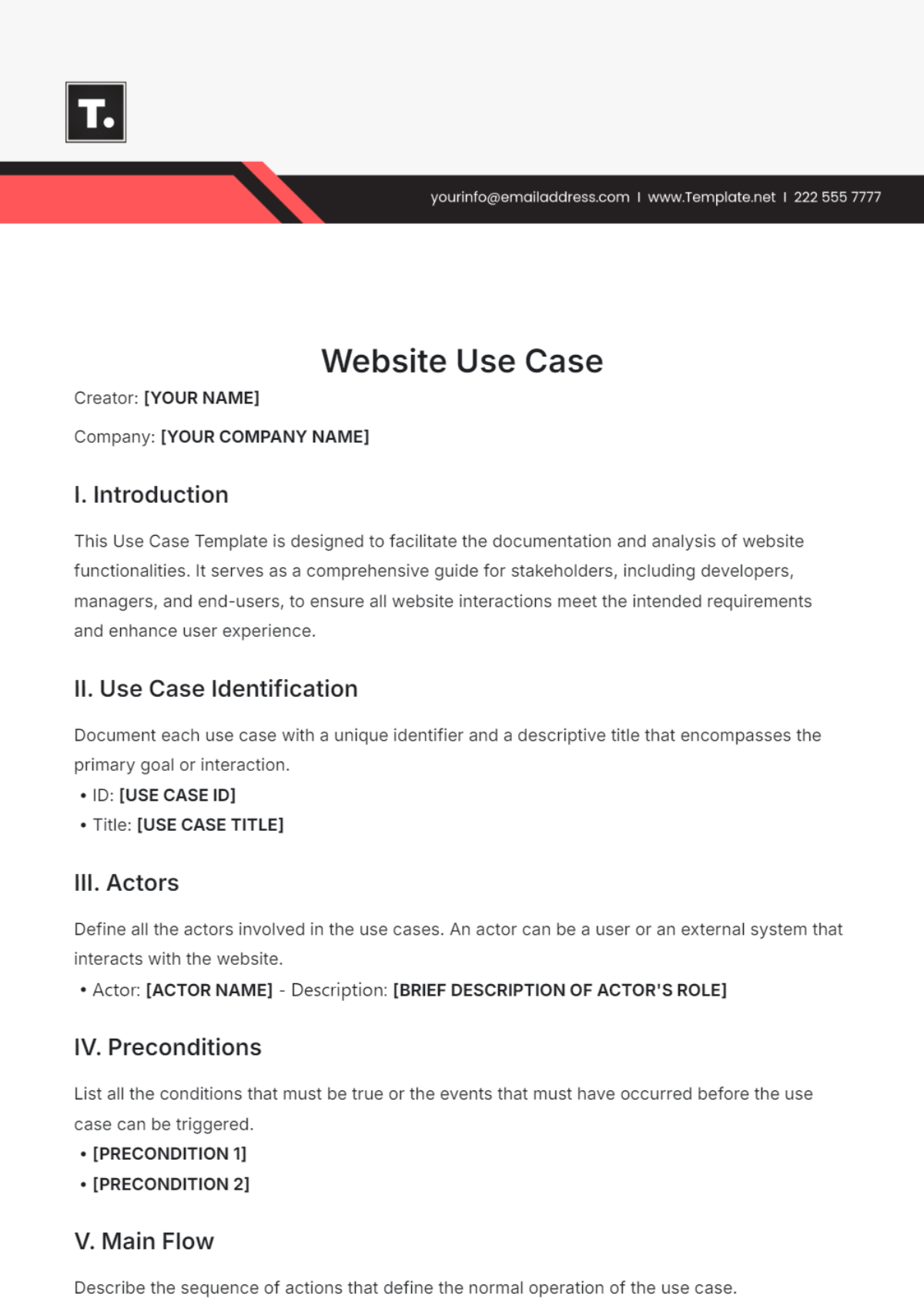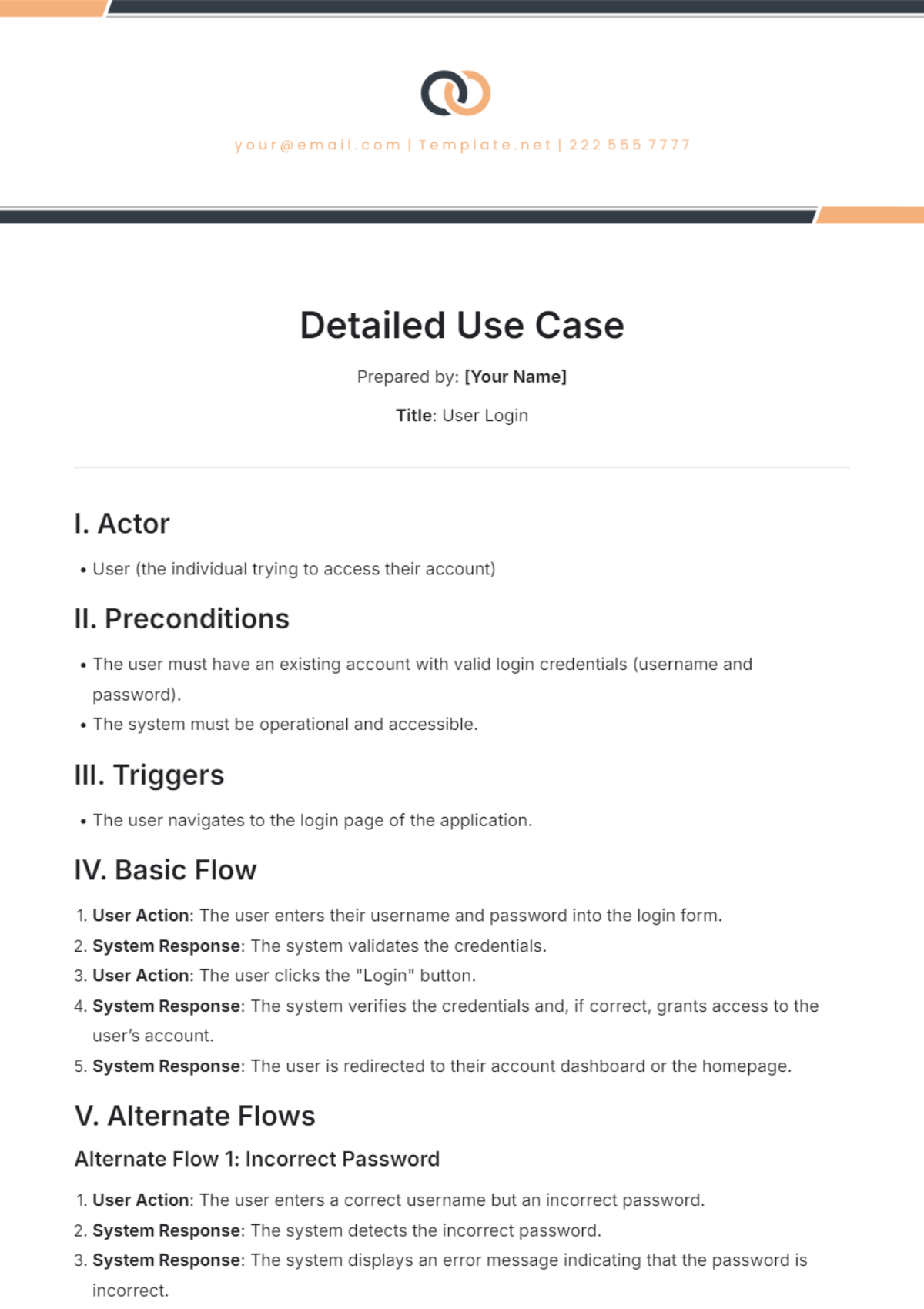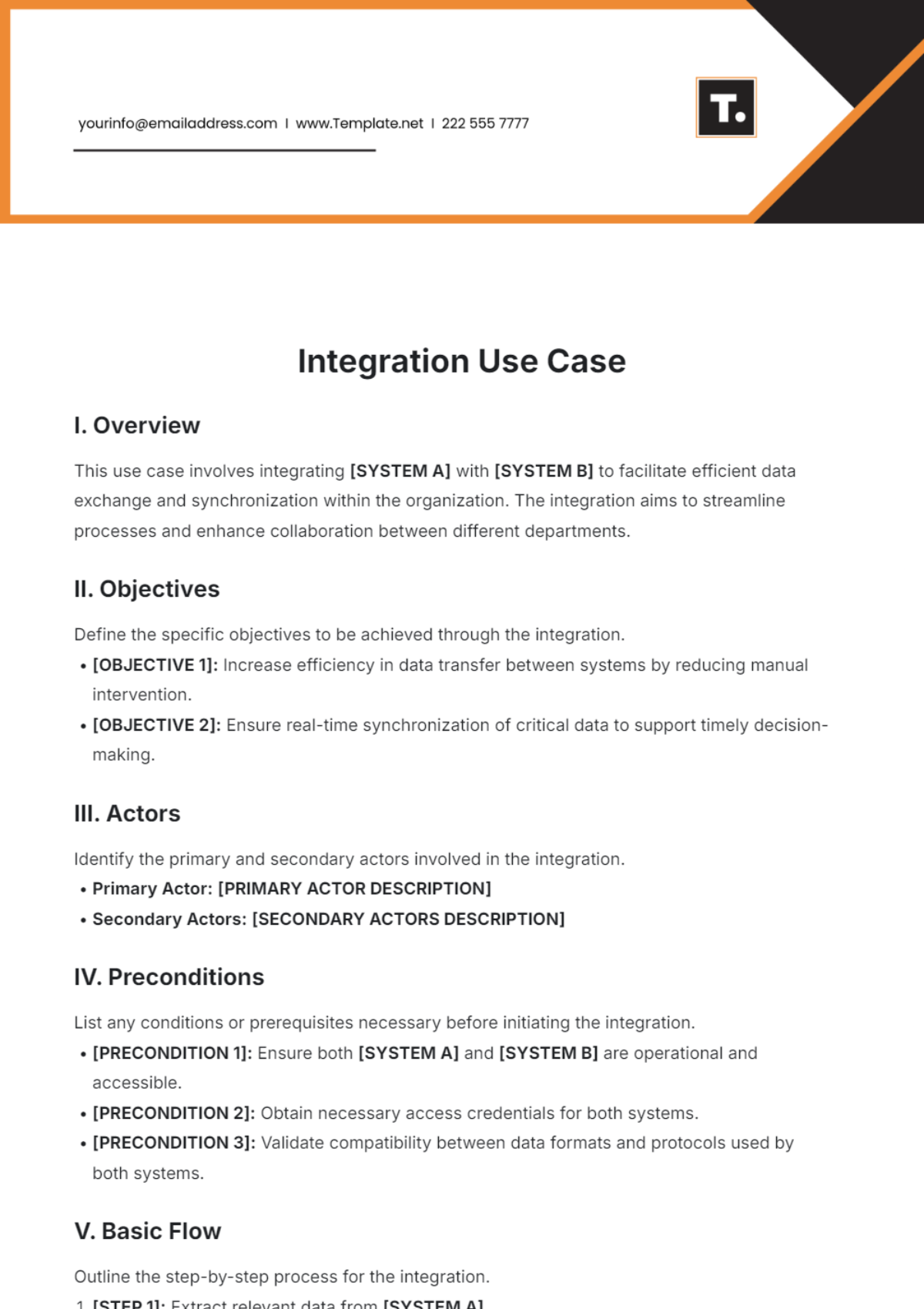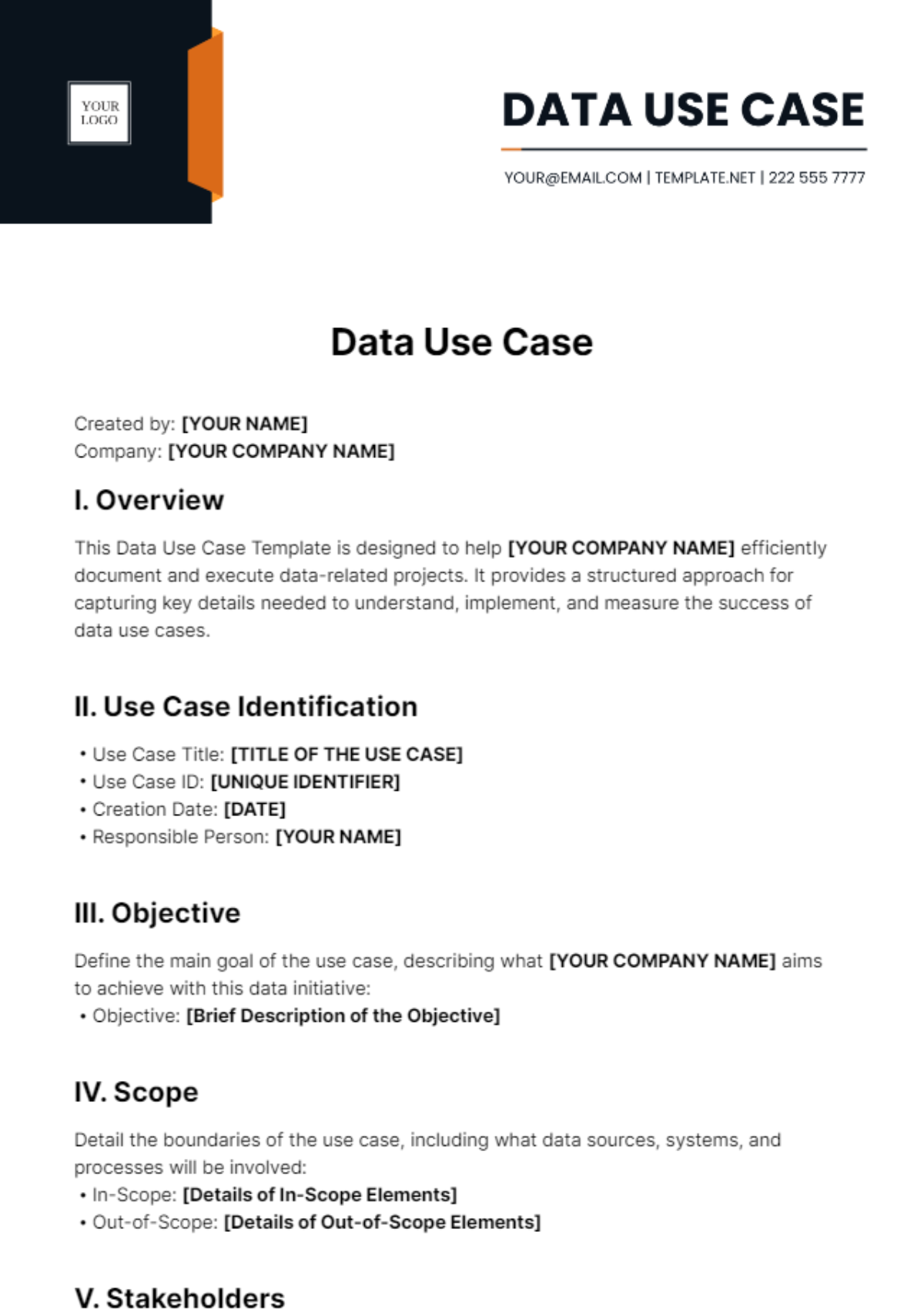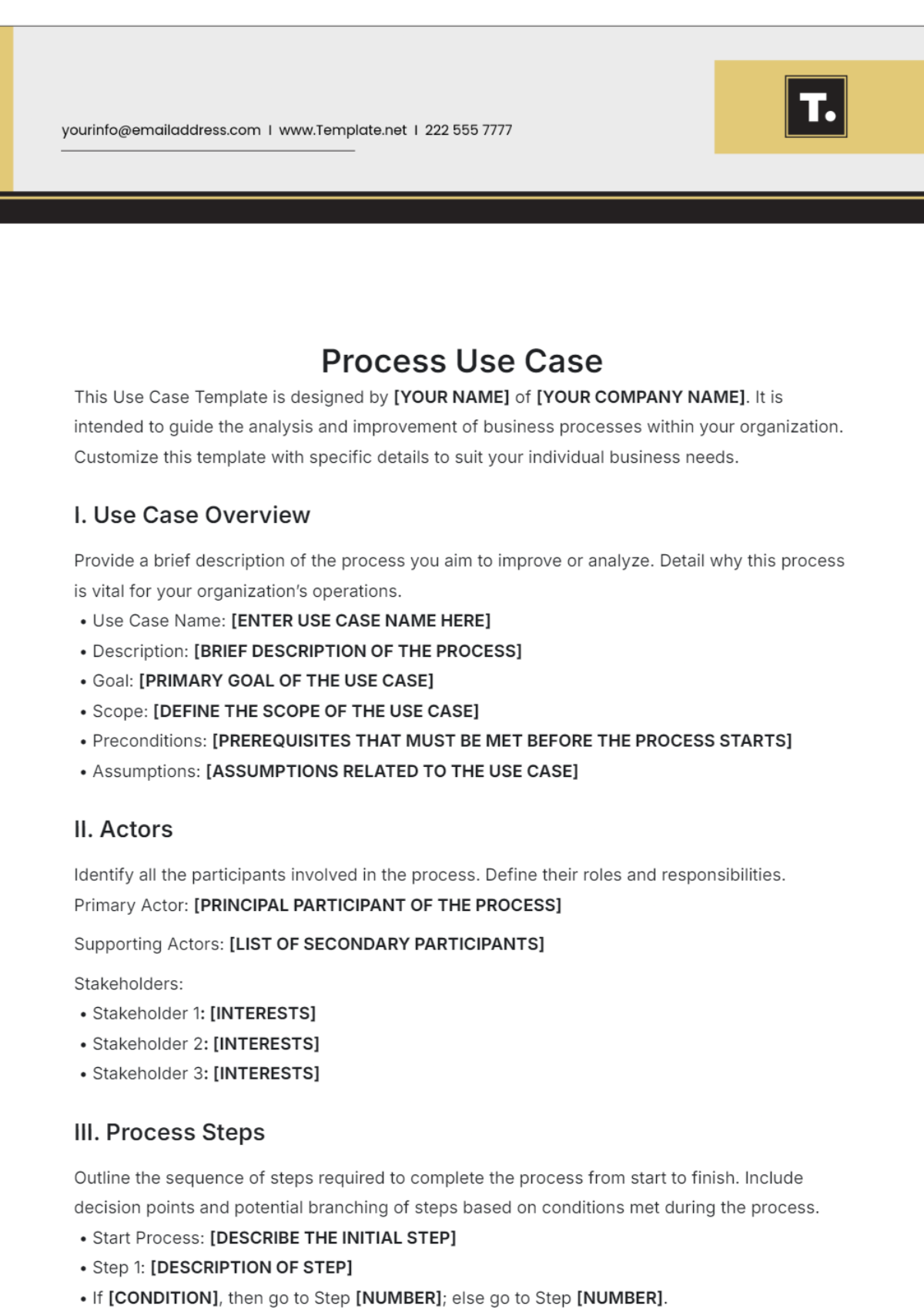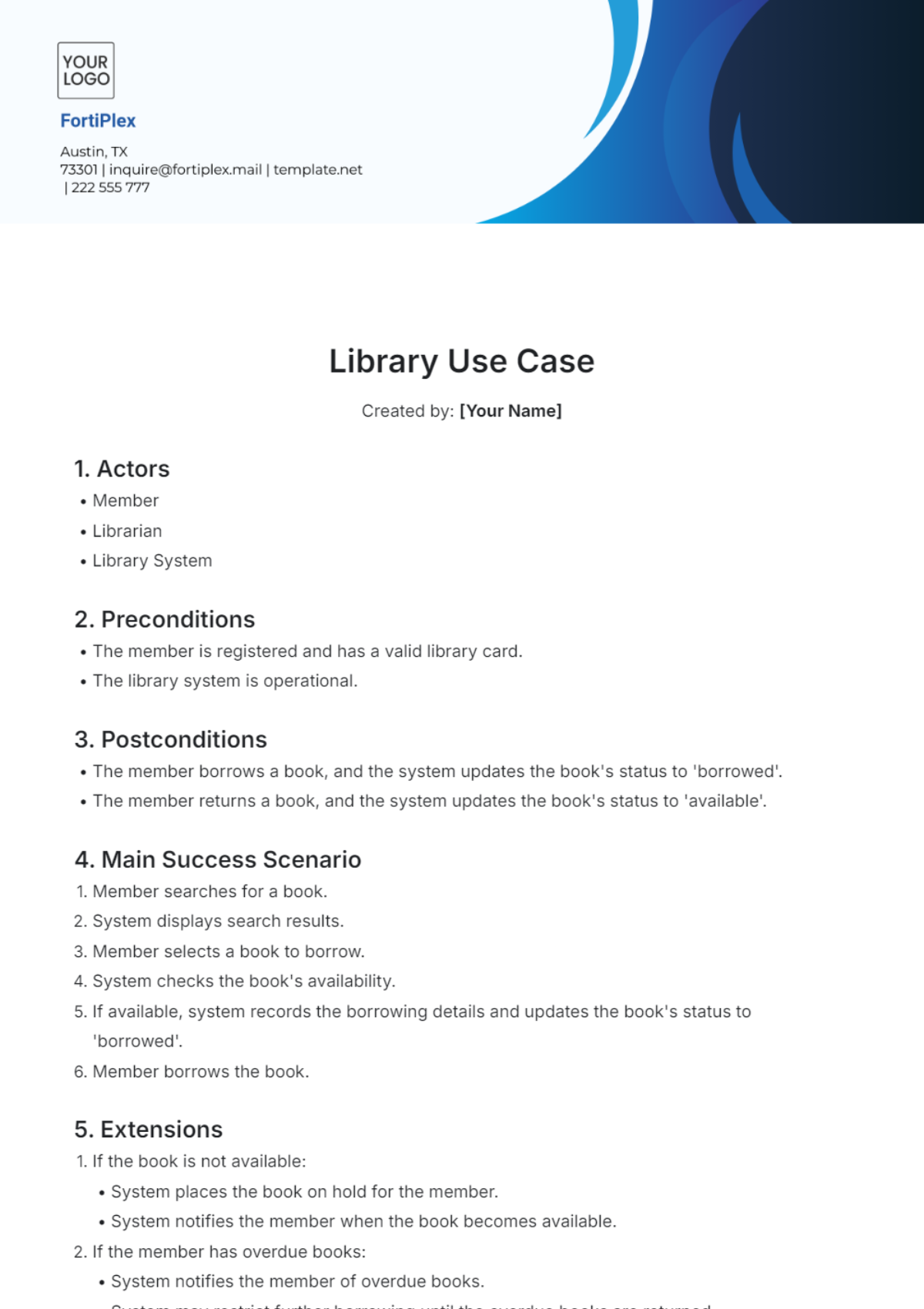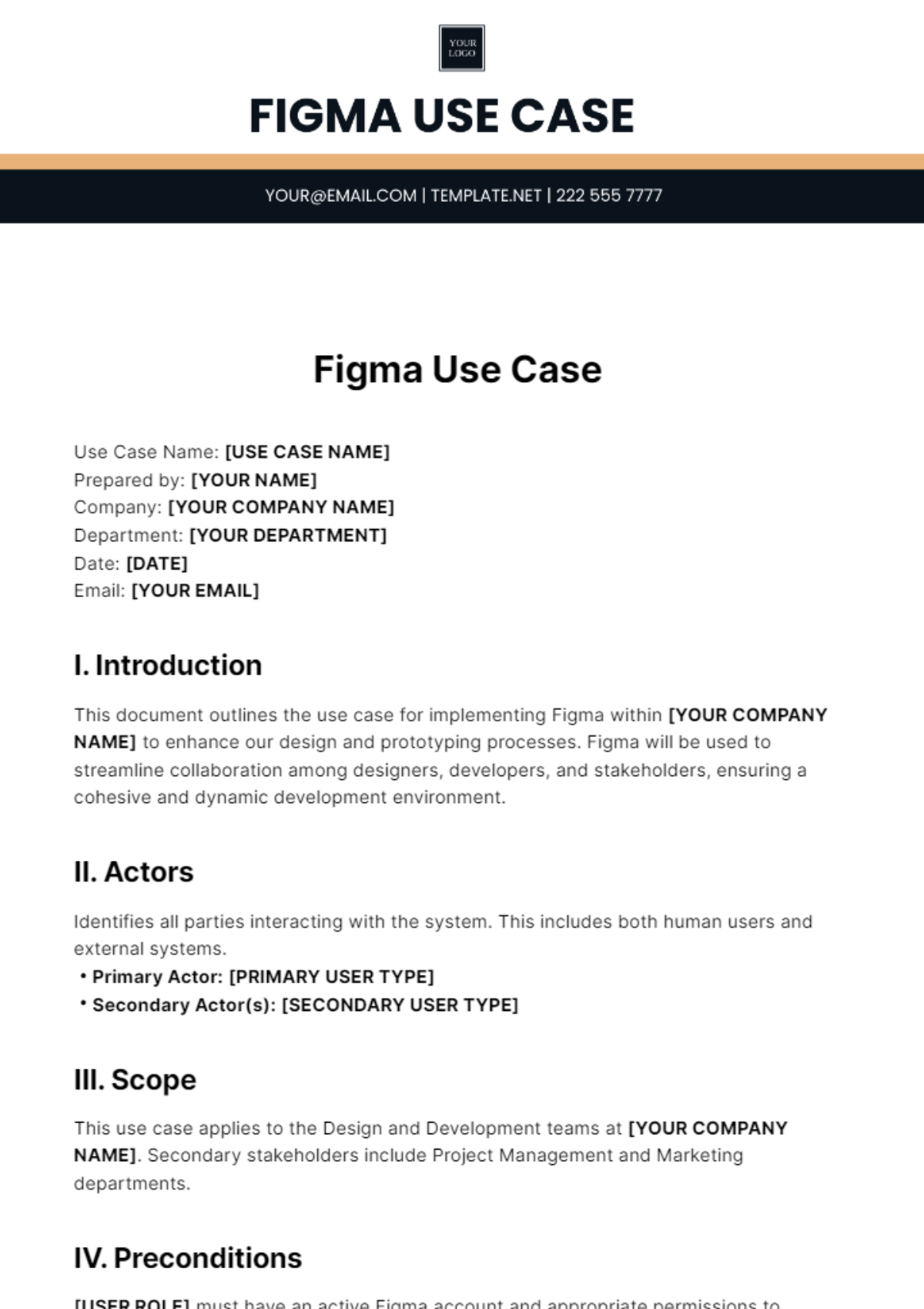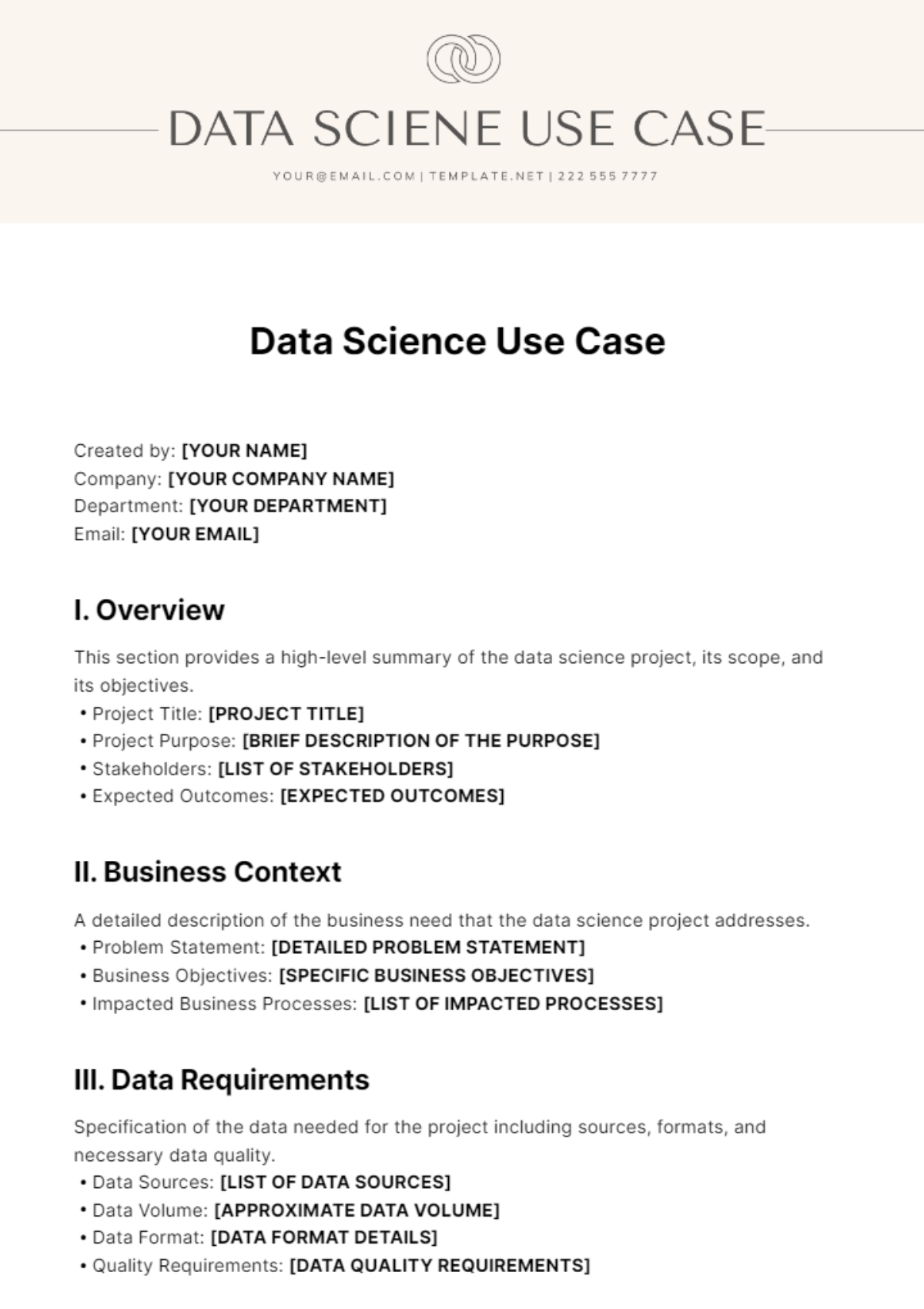Business Requirements Use Case
Created by: [YOUR NAME]
Company: [YOUR COMPANY NAME]
I. Overview
This section provides a general overview including the purpose, scope, and objectives of the business use case. This will help stakeholders understand the context and the goals aligned with this use case.
[USE CASE NAME]: A clear, descriptive name for the use case.
[DATE]: The date when the use case was last updated.
Purpose: An explanation of why this use case has been developed.
Scope: Boundaries and limitations of the use case.
Objectives: Key results that need to be achieved.
II. Actors
Define all the actors involved in this use case. An actor is any user or system that interacts with the process described in the use case.
Primary Actors: Those who interact directly with the system.
Secondary Actors: External interfaces or third-party systems that play an indirect role in the scenario.
III. Pre-conditions
State what must be true or satisfied at the onset before the use case is started.
Initial Status: The status of the system before the use case initiates.
Configuration Requirements: Specific configurations that must be in place.
IV. Basic Flow
Describe the sequence of steps that outline the interaction between the actor(s) and the system to achieve the objective of the use case.
The actor does something.
The system responds.
This pattern is repeated for each step of the use case.
V. Alternative Flows
Detail any alternative variations to the basic flow listed above and when they would occur in the sequence of actions.
Alternative Step 1: [DESCRIPTION OF ALTERNATIVE ACTION AND TRIGGERS]
Decision points, where the actor has to make a choice that could change the flow.
VI. Post-conditions
What must be true when the use case is completed to ensure the objective has been met.
Outcome Status: Final status of the system after the end of the use case.
Post-case Data Conditions: Special data considerations or modifications that need to be handled.
VII. Exception Scenarios
Specify what should occur if an expected error or exception arises.
Exceptions due to system failure or input errors.
Responses to different exception scenarios.
VIII. Business Rules
List and describe any business rules that relate specifically to this use case.
Business Rule 1: Description and implications for the use case.
Business Rule 2: Further details on how these rules impact the use case flows.
IX. Special Requirements
Include any non-functional requirements or special conditions that need to be met.
Performance Requirements: [REQUIREMENTS].
Security Requirements: E.g., encryption needs, authentication methods.
Audit and Compliance: Necessary logs, monitoring, etc.
X. Supporting Information
This section can include any other documentation, APIs, or resources that support this use case.
Reference Documents
API Documentation
Related Use Cases
